Example SWOT analysis templates help evaluate a business’s strengths, weaknesses, opportunities, and threats. These templates give a clear picture of what a company can do and what challenges it might face.
Data is collected from the business environment to determine its position. The SWOT analysis then shows what help is needed to reach goals, identifies the company’s obstacles, and identifies the best ways to achieve success.
For the best results, companies must be honest when using SWOT analysis templates. They should list both their strengths and weaknesses. If they only include the good points and ignore the bad ones, the analysis will not be accurate. Being fair and realistic is key to maximizing a SWOT analysis.
What is a SWOT Analysis Template?
It is a framework to evaluate a business’s strengths, weaknesses, opportunities, and threats.
Key Components of a SWOT Analysis Template
A SWOT analysis template helps you understand your business better. It looks at four key components: strengths, weaknesses, opportunities, and threats. Here is a simple guide to each element:
Strengths
Strengths are the things your business does well. These are your advantages. Here are some examples of strengths:
- Loyal Customers: Having customers who keep coming back.
- High-Quality Products: Offering products that people love.
- Strong Brand: A well-known and trusted name.
- Good Location: Being in a place where many people can find you.
- Skilled Employees: Having workers who are very good at their jobs.
Weaknesses
Weaknesses are the things your business does not do well. These are areas where you need to improve. Here are some examples of weaknesses:
- High Costs: Spending too much money to run your business.
- Poor Customer Service: Not treating customers well.
- Limited Online Presence: Not being easy to find on the internet.
- Old Technology: Using outdated tools and machines.
- Low Brand Recognition: Not many people know about your business.
Opportunities
Opportunities are chances for your business to grow and succeed. These come from outside your business. Here are some examples of opportunities:
- New Markets: Selling your products in new places.
- New Products: Creating new items to sell.
- Partnerships: Working with other businesses to help each other.
- Growing Trends: Taking advantage of what is popular right now.
- Technology Advances: Using new technology to improve your business.
Threats
Threats are things that could harm your business. These also come from outside your business. Here are some examples of threats:
- New Competitors: Other companies selling similar products.
- Economic Changes: Problems in the economy that make people spend less.
- Changing Trends: People no longer want what you sell.
- Regulations: New rules that make it harder to do business.
- Natural Disasters: Events like storms or earthquakes that can damage your business.
Why Should Businesses Use SWOT Analysis Templates?
Focus on Strengths
These might include loyal customers, good products, or a strong brand. Knowing these strengths helps companies use them well.
Identify Weaknesses
A SWOT analysis shows these weaknesses clearly, such as poor customer service or high costs. By seeing these problems, companies can work to fix them.
Spot Opportunities
A SWOT analysis helps find these opportunities. For example, there might be a new market to enter or a new product to develop. Finding opportunities early can give businesses a big advantage.
Prepare for Threats
These might be new competitors, changes in the market, or other risks. A SWOT analysis helps companies see these threats and plan for them. Being prepared allows businesses to stay strong and avoid problems.
Make Better Decisions
Businesses can make better decisions when they have a clear view of their strengths, weaknesses, opportunities, and threats. This helps them create strong plans and grow successfully.
Simple and Easy to Use
They help organize thoughts and ideas, making it easier for everyone in the business to understand and work together.
Improve Communication
When everyone in the business understands the strengths, weaknesses, opportunities, and threats, communication improves, and teams can work together better to achieve common goals.
How Do You Create a SWOT Analysis Template?
Creating a SWOT analysis template is easy and very helpful for your business. Here are the steps to create one:
- Gather Information: First, collect all the information about your business. This includes data on your products, services, customers, and market. Talk to employees and customers, and look at your business records.
- Identify Strengths: Think about what your business does well. These are your strengths. They could have loyal customers, great products, or a strong brand. Write these down in the strengths section of your template.
- Identify Weaknesses: Next, look at what your business doesn’t do well. These are your weaknesses. They might be poor customer service, high costs, or old technology. Write these down in the weaknesses section.
- Spot Opportunities: Look outside your business to find opportunities. These are chances to grow or improve. They could be new markets, products, or changes in customer needs. Write these down in the opportunities section.
- Identify Threats: Think about what could harm your business. These are threats. They might be new competitors, changes in the market, or economic problems. Write these down in the threats section.
- Analyze the Data: Now, look at all the information you have written down. Consider how your strengths can help you take advantage of opportunities and overcome threats. Also, think about how to improve your weaknesses.
- Create a Plan: Use the information from your SWOT analysis to create a plan. Focus on using your strengths, fixing weaknesses, taking advantage of opportunities, and preparing for threats.
SWOT Analysis Template
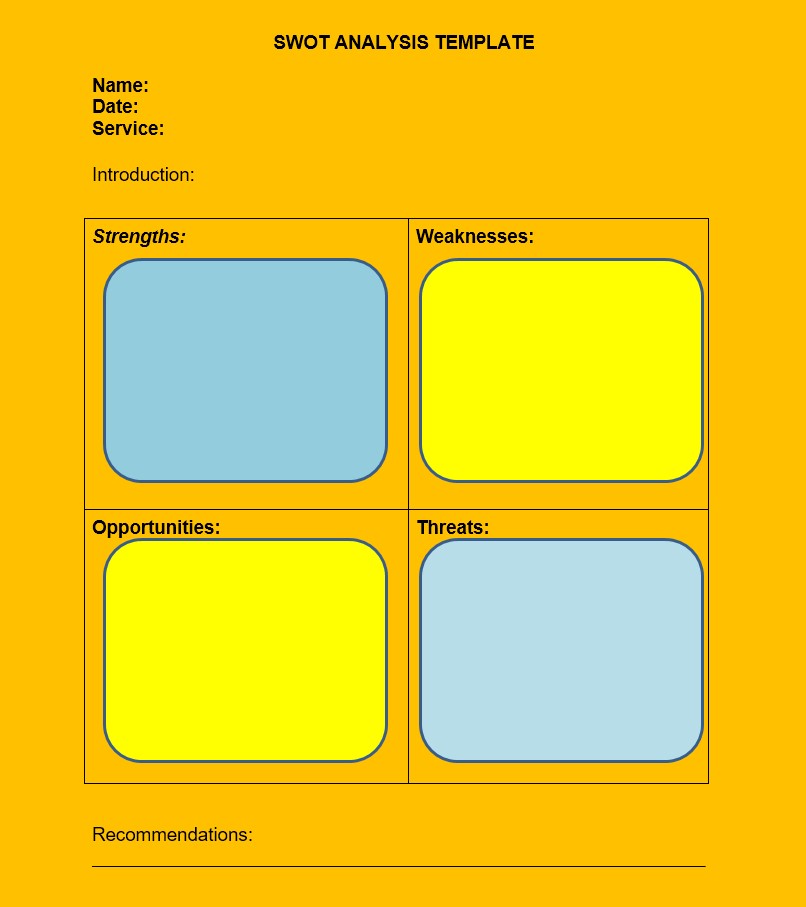
Example of a SWOT Analysis Template
Here is a simple example of what your SWOT analysis template might look like:
Strengths:
- Loyal customers
- High-quality products
- Strong brand
Weaknesses:
- High production costs
- Limited online presence
- Outdated technology
Opportunities:
- Expanding into new markets
- Developing new products
- Growing online sales
Threats:
- New competitors
- Economic downturn
- Changes in customer preferences
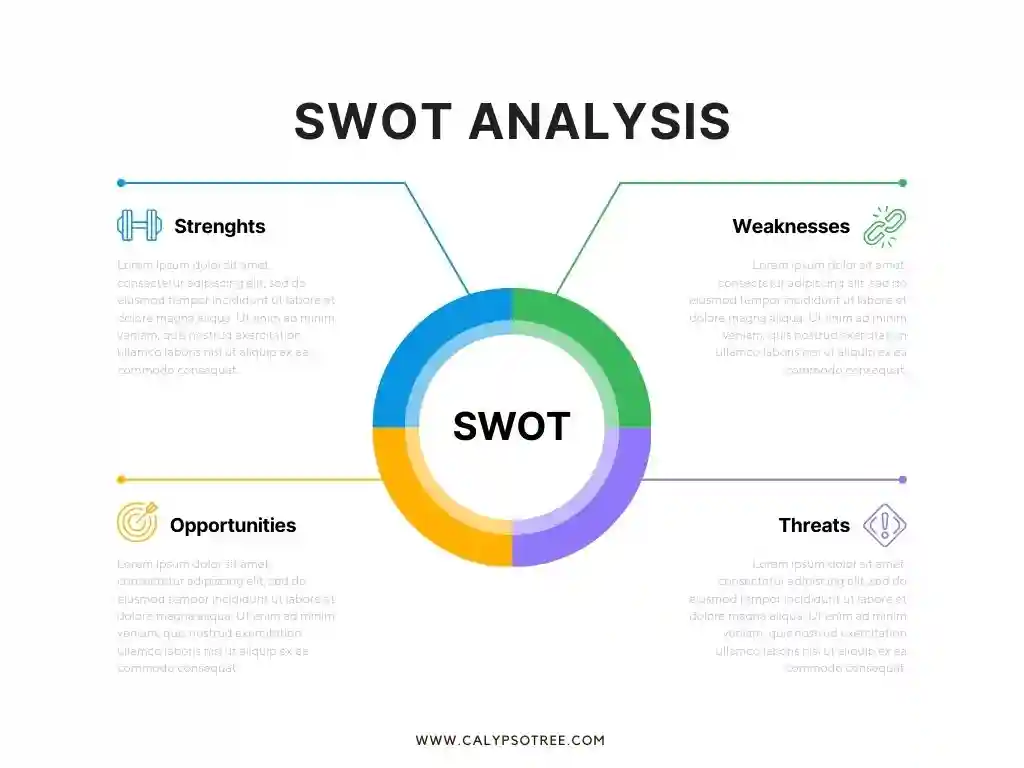
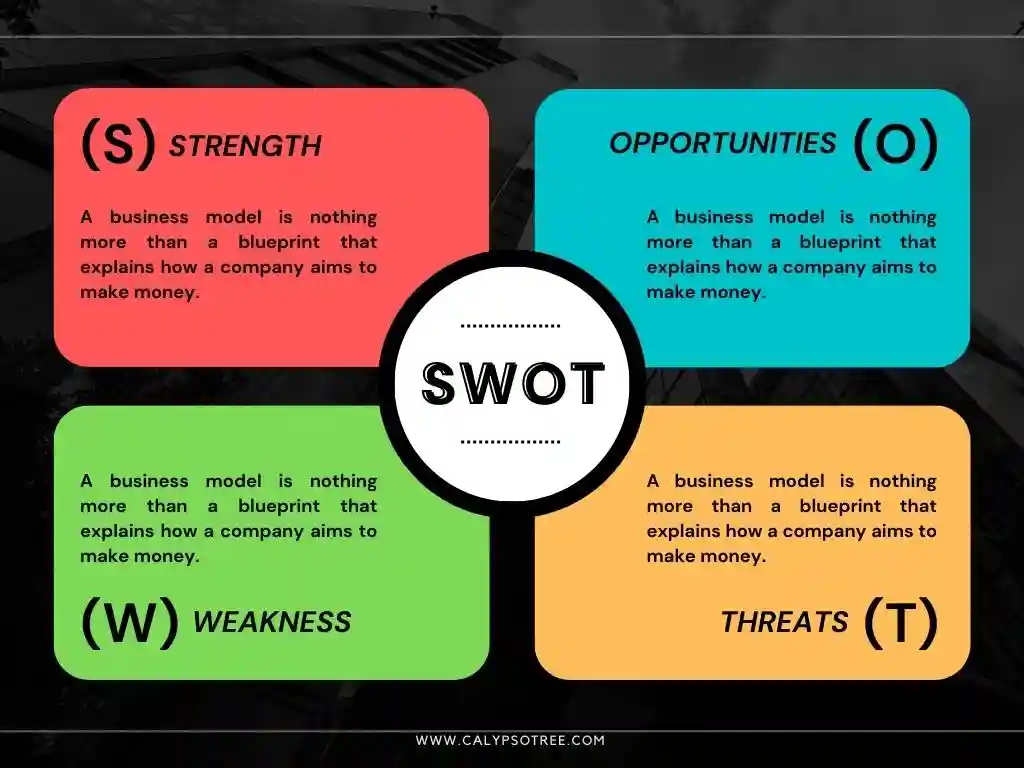
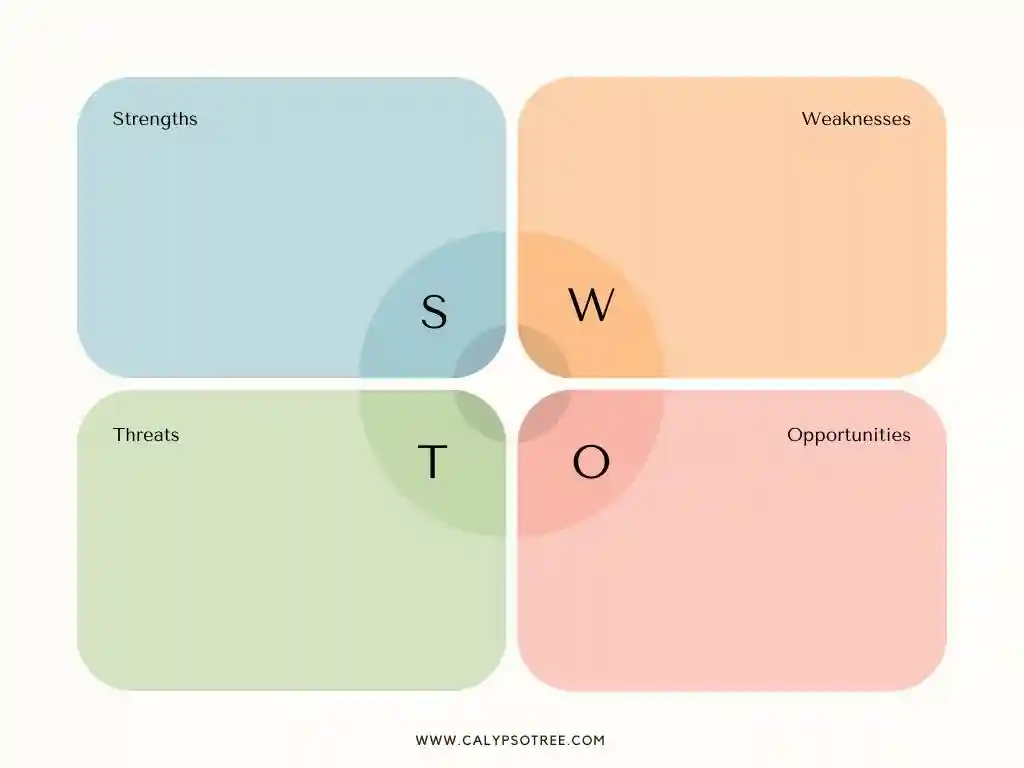
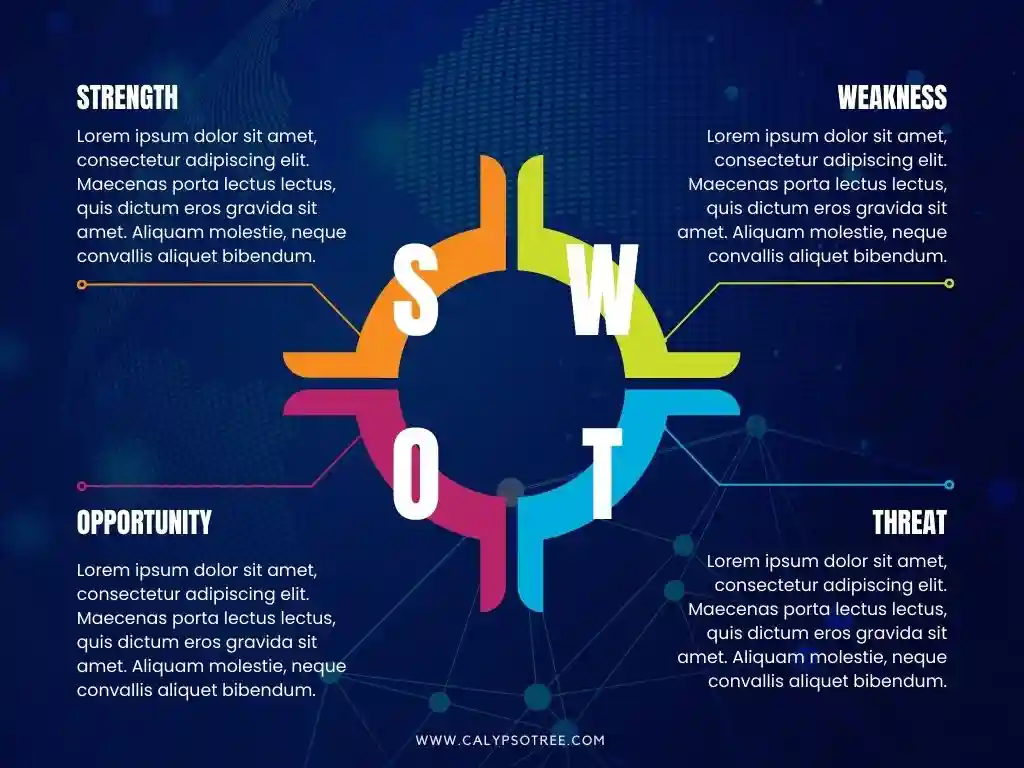
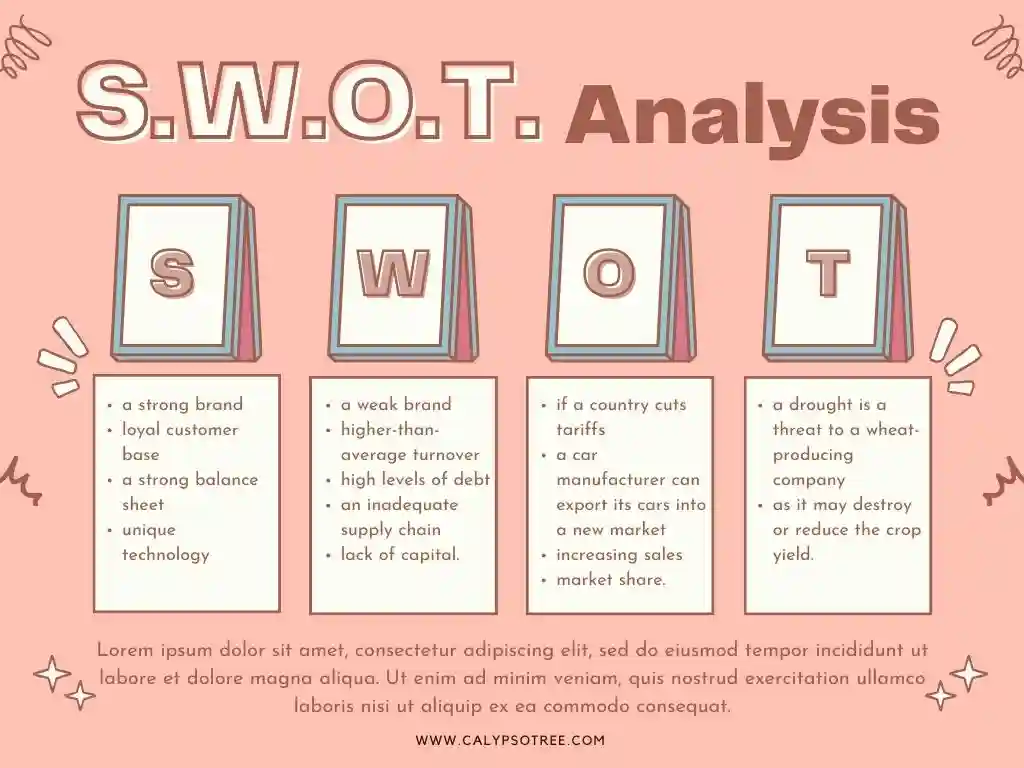
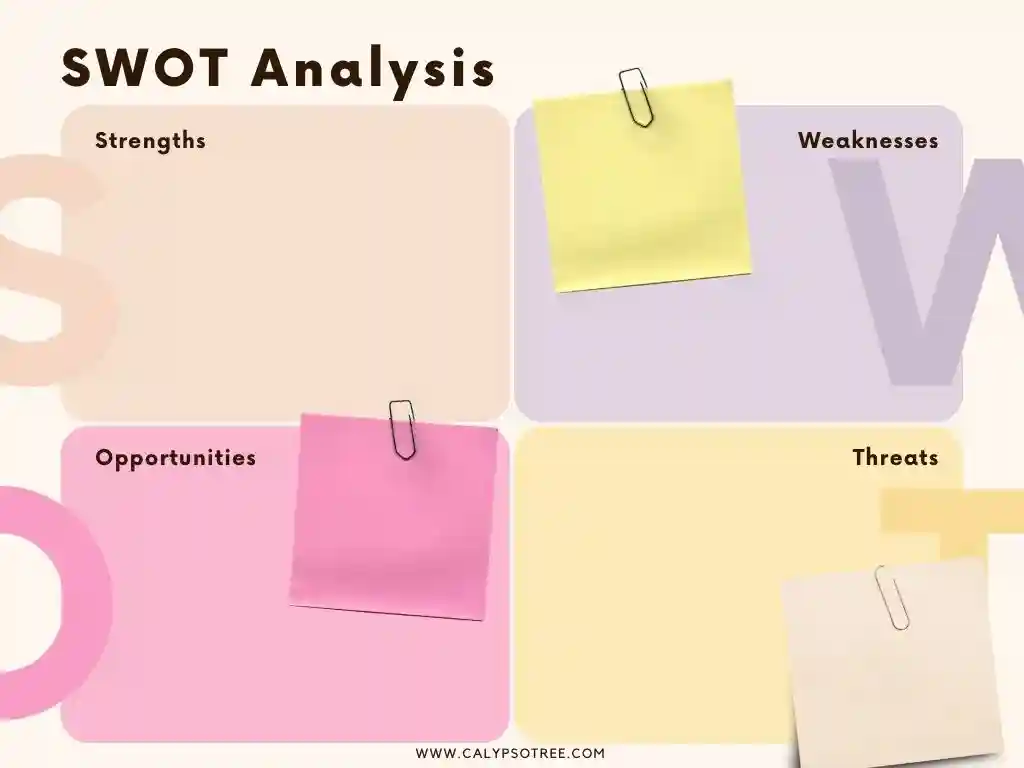
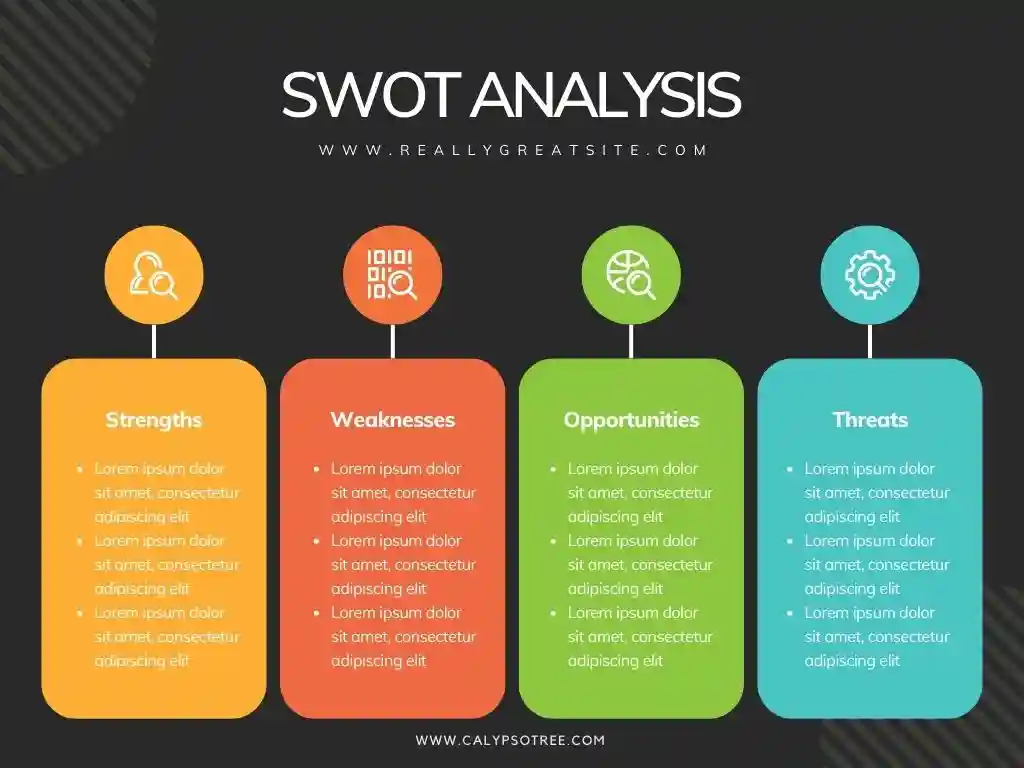
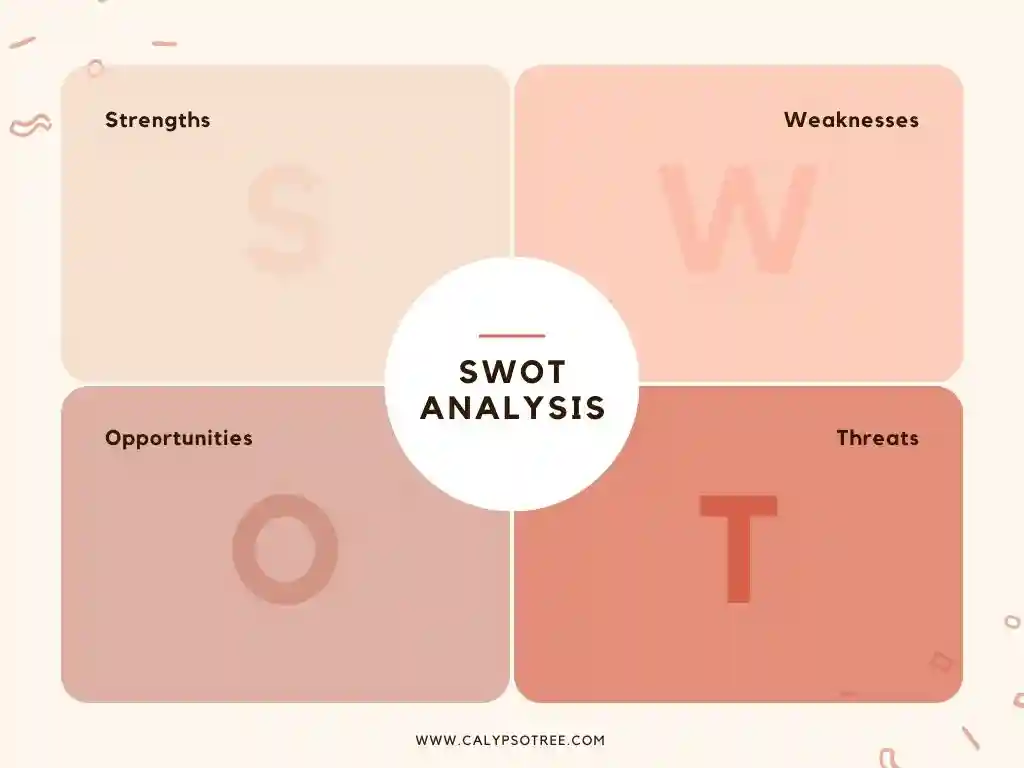
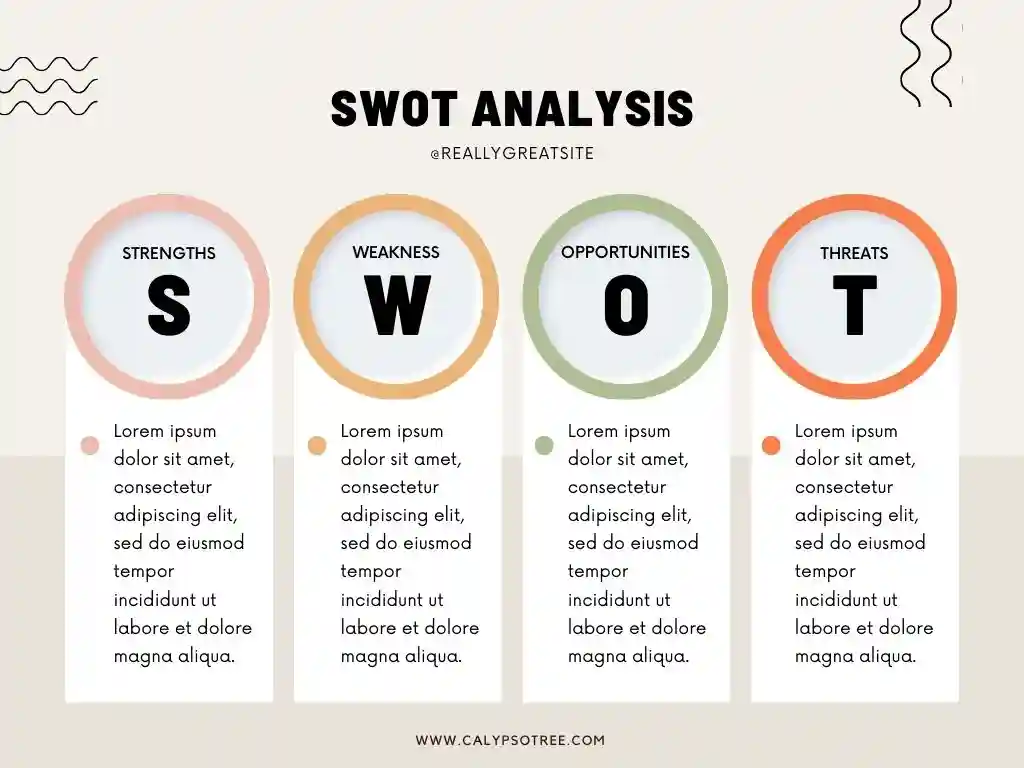
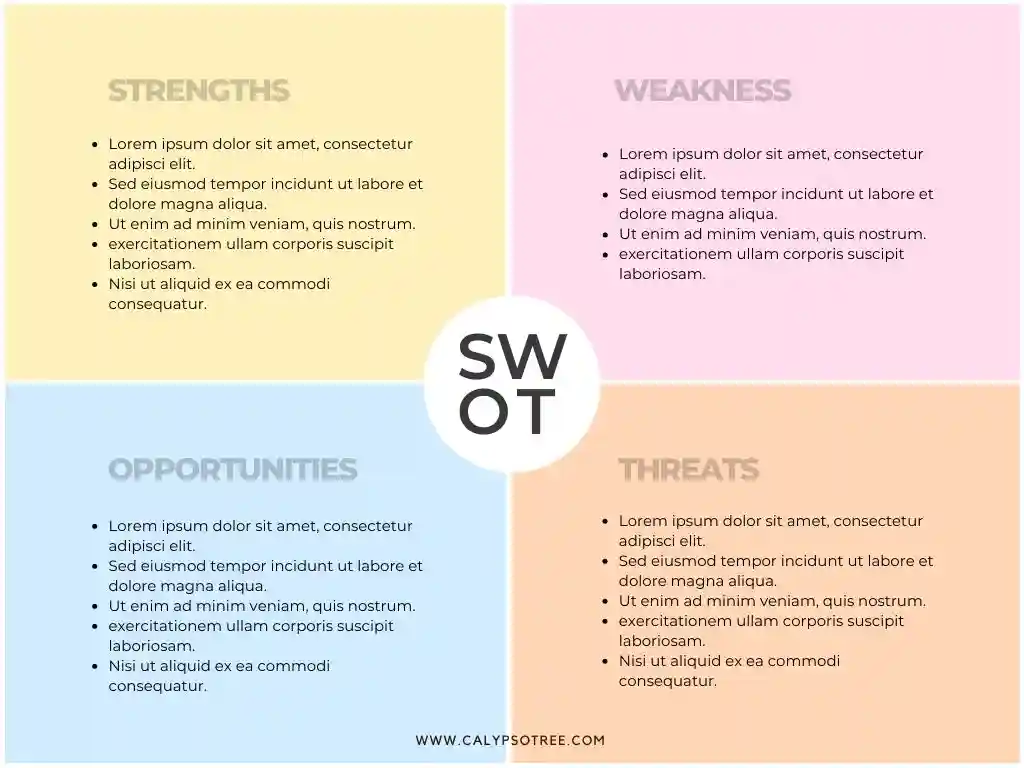
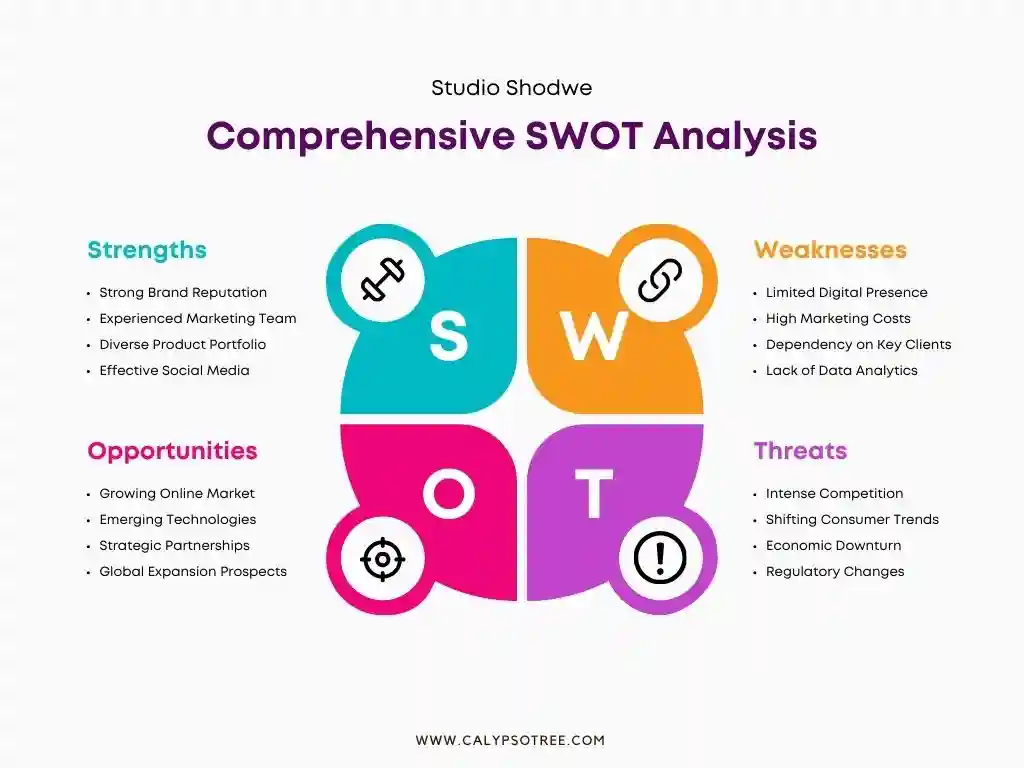
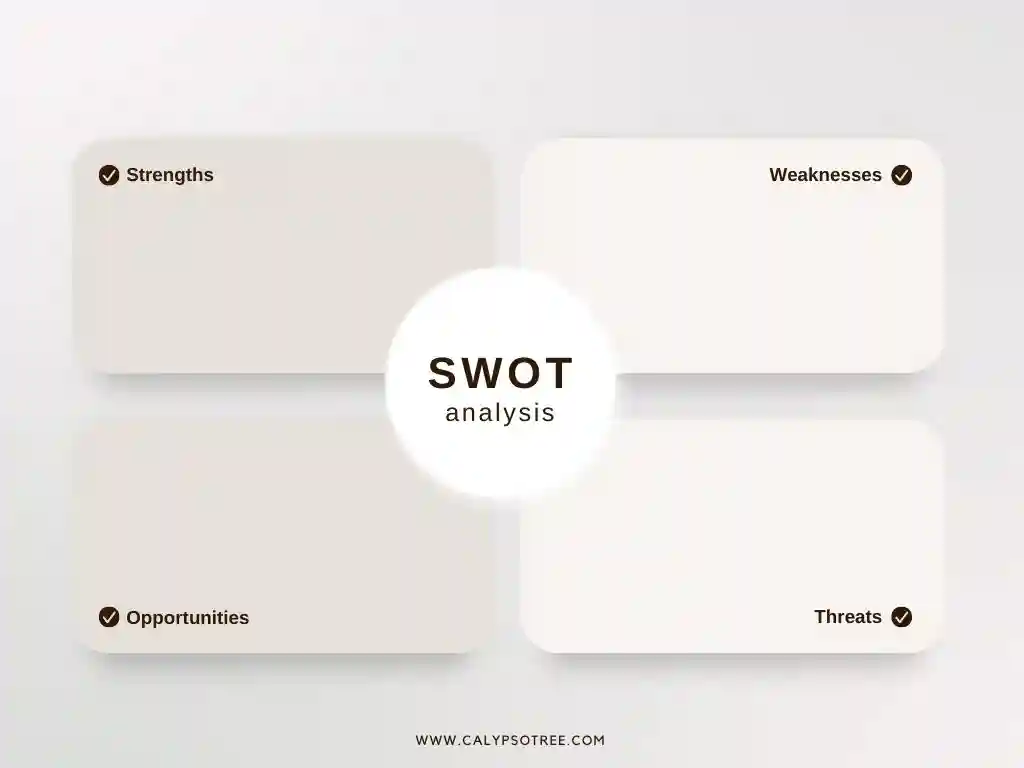

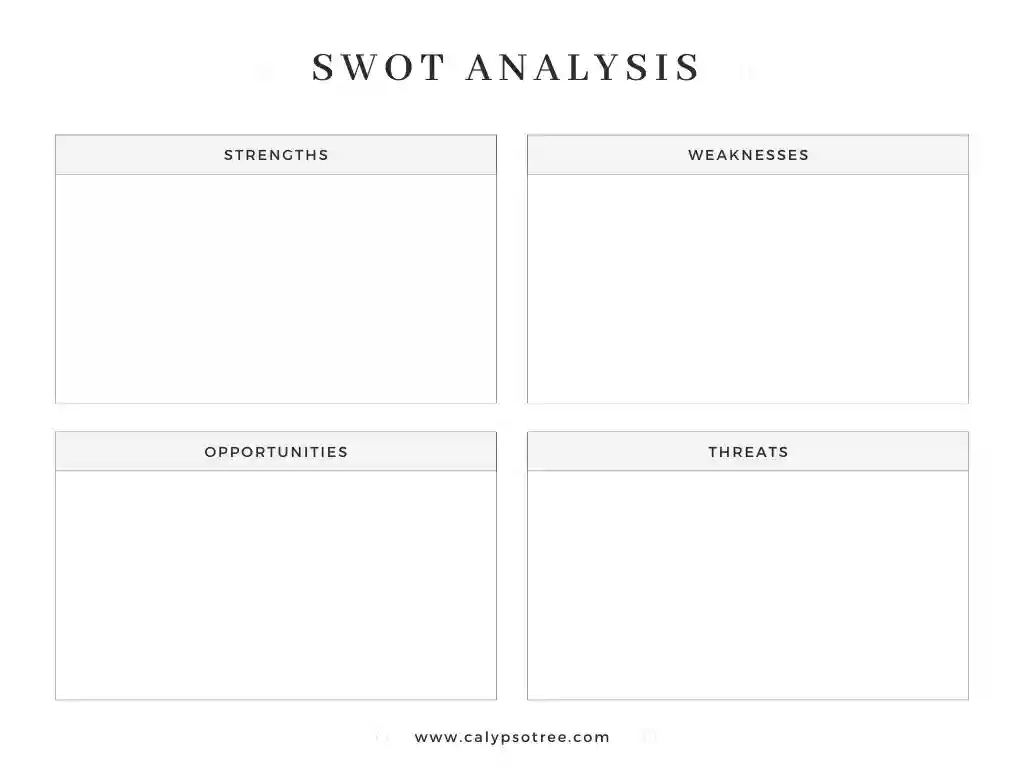
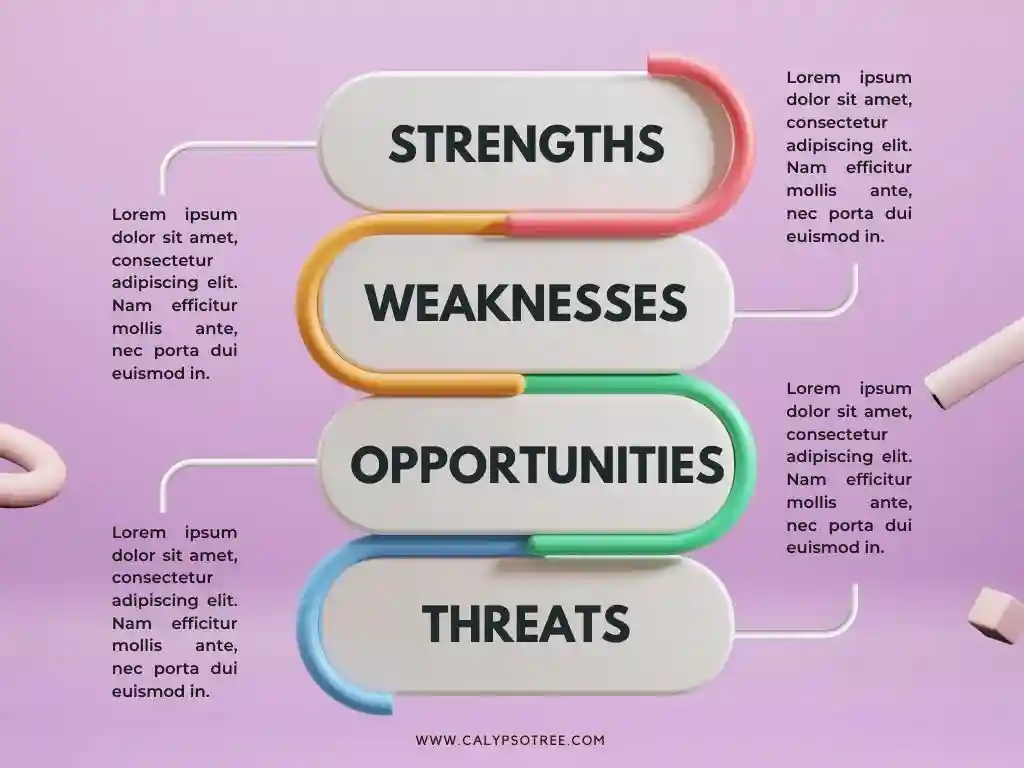
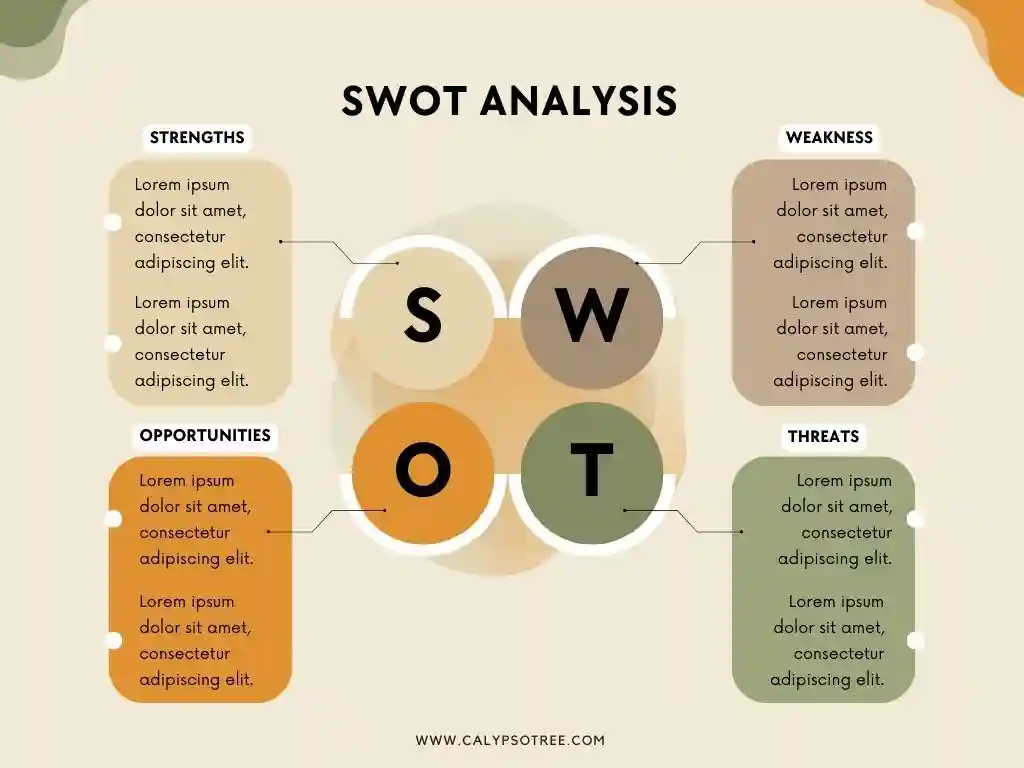
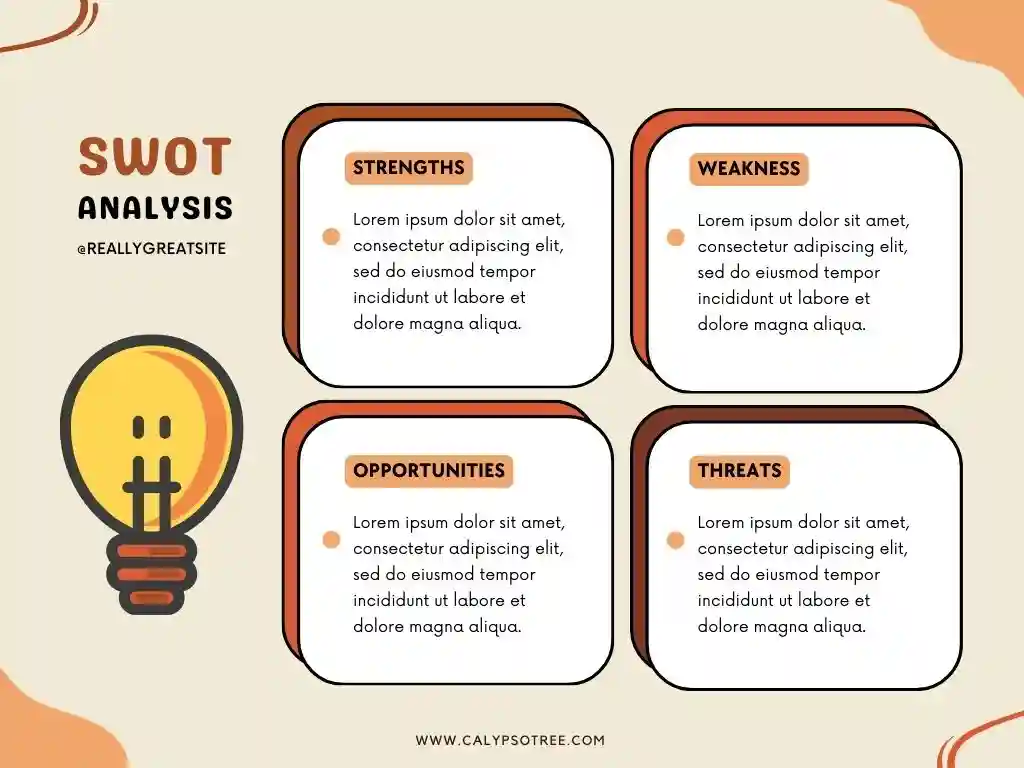
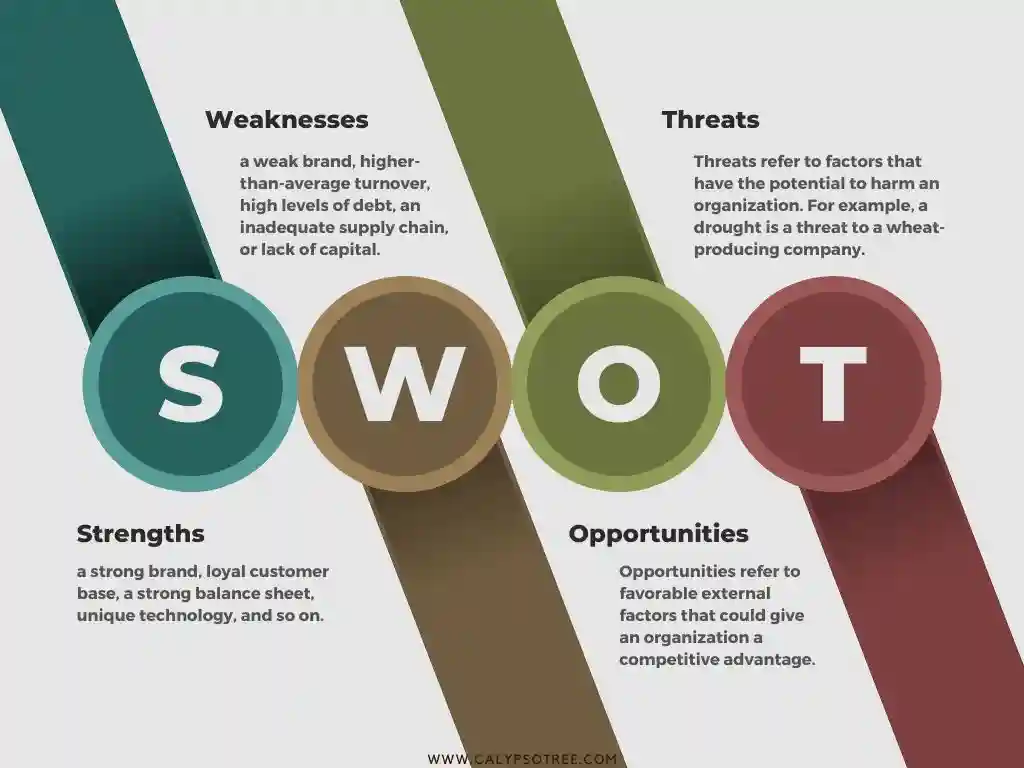
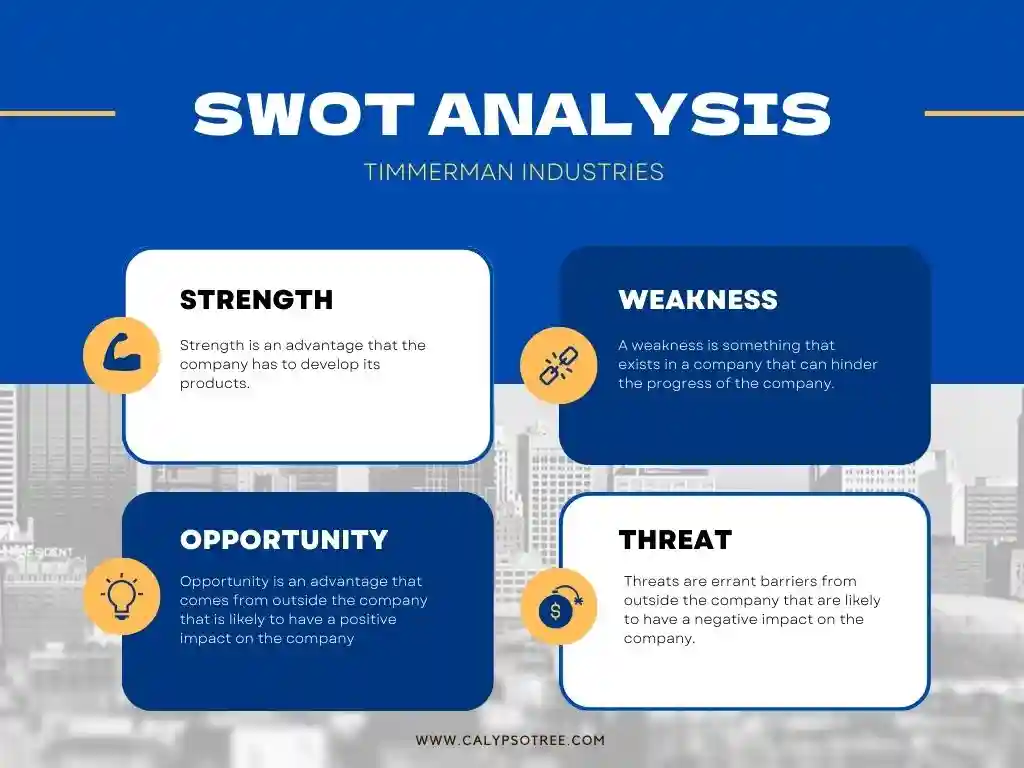
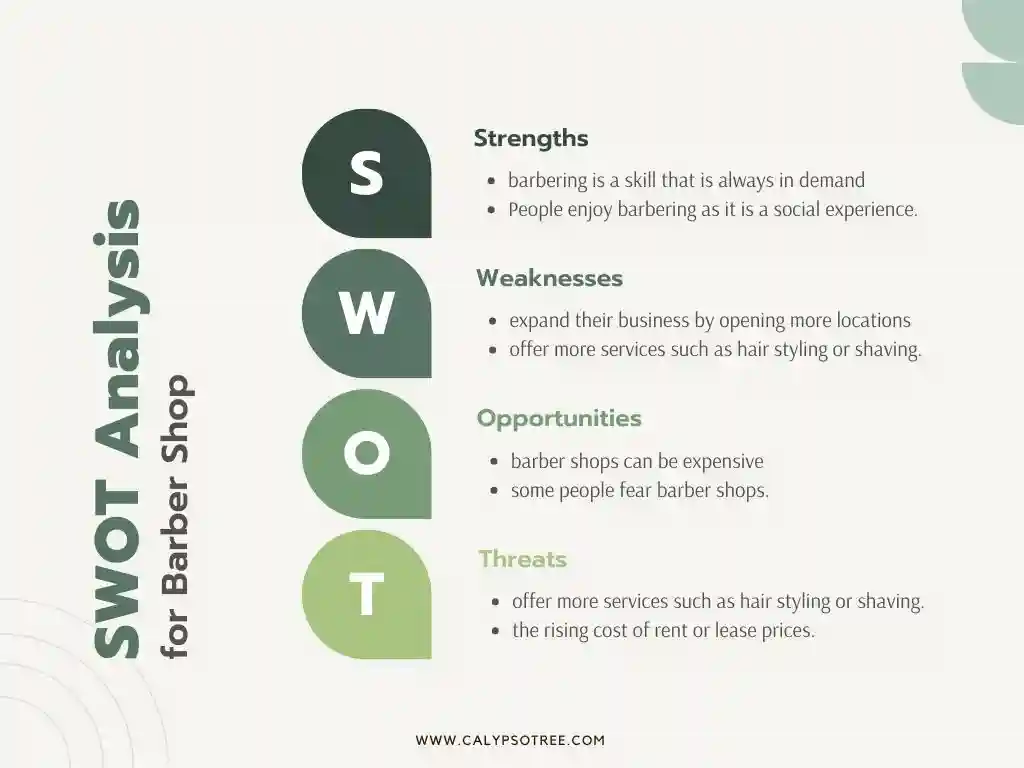
Example of SWOT Analysis Templates 20
Tips for Creating a SWOT Analysis Template
- Be Honest: Include all your strengths and weaknesses honestly. This makes your analysis more useful.
- Be Specific: Write specific points, not general ideas. This helps you understand your business better.
- Keep It Simple: Your SWOT analysis should be easy to understand. Don’t make it too complicated.
Common Mistakes to Avoid When Using a SWOT Analysis Template
Using a SWOT analysis template is very helpful, but there are some common mistakes to avoid:
Being Too Vague
Don’t use general words. Be specific. For example, instead of saying “bad customer service,” say “customers wait too long for help.”
Ignoring Weaknesses
It’s important to be honest about weaknesses. Ignoring them won’t make them go away. Write them down so you can fix them.
Overlooking External Factors
Don’t just look inside your business. Think about outside factors, too, like new competitors or changes in the market.
Not Updating Regularly
Businesses change over time. Make sure to update your SWOT analysis regularly to keep it useful.
Being Overly Positive
It’s good to be positive, but don’t ignore problems. A balanced view is important.
How Can SWOT Analysis Templates Help in Strategic Planning?
SWOT analysis templates are very helpful for strategic planning. Here’s how:
- Clear Understanding: They help you see what your business does well and where it can improve. This clear view enables you to make good plans.
- Focus on Goals: Knowing your strengths allows you to focus on goals that match your strengths, helping you achieve success faster.
- Identify Opportunities: Spotting opportunities helps you grow your business. You can plan to take advantage of new markets or trends.
- Prepare for Threats: Knowing about threats helps you prepare for them. This makes your business stronger and ready for challenges.
- Improve Weaknesses: Identifying weaknesses allows you to make plans to fix them, which helps your business improve over time.
How Can a Business Turn Weaknesses Identified in a SWOT Analysis into Strengths?
Turning weaknesses into strengths is a smart move. Here’s how a business can do it:
Training
If your employees need new skills, provide training. This can turn a weakness into a strength.
Invest in Technology
If old technology is a problem, invest in new tools. This can improve efficiency and performance.
Improve Processes
Look at how things are done and find better ways. Improving processes can fix many weaknesses.
Hire Experts
If you lack expertise in an area, hire someone who knows it well. This can strengthen your business.
Listen to Customers
If customer service is a weakness, listen to feedback and make changes. Happy customers can become a strength.
How Often Should a SWOT Analysis Be Updated?
Updating your SWOT analysis is very important. Here’s how often you should do it:
Regular Updates
Updating your SWOT analysis at least once a year is a good idea. This helps keep it current and useful.
After Big Changes
If your business experiences a major change, update your analysis. This could include launching a new product, a major market change, or new competitors.
New Goals
When you set new business goals, update your SWOT analysis. This will ensure that your plans are based on the most recent information.
Regular Reviews
Even if there are no big changes, review your analysis every few months. This helps keep you on track and aware of new strengths, weaknesses, opportunities, or threats.
SWOT Analysis Templates Used for Personal Goals
A SWOT analysis is not just for businesses. You can use it for personal goals, too. Here’s how:
Identify Personal Strengths
Think about what you do well. Are you good at organizing, working with people, or learning new things? Write these strengths down.
Identify Personal Weaknesses
Be honest about what you need to improve. Do you have trouble managing time, speaking in public, or staying focused? Write these weaknesses down.
Spot Opportunities
Look for opportunities to grow and improve. These could include taking a class, starting a hobby, or meeting new people. Write these opportunities down.
Identify Threats
Think about what could stop you from reaching your goals. This might be a lack of time, resources, or support. Write these threats down.
Example of a Personal SWOT Analysis
Here’s an example to help you get started:
Strengths:
- Good at organizing
- Great with people
- Quick learner
Weaknesses:
- Trouble managing time
- Nervous about public speaking
- Easily distracted
Opportunities:
- Take a time management class
- Join a public speaking group
- Find a quiet place to work
Threats:
- Busy schedule
- Lack of resources
- Not enough support
SWOT analysis templates helps you see your business’s good and bad parts. This simple tool can help your business grow and succeed. Remember to be honest, specific, and clear in your analysis.

The content creator team at calipsotree.com is dedicated to making topics accessible to everyone, with over 9 years of experience in writing and breaking down complex concepts into easy-to-understand articles that answer readers’ financial questions.








